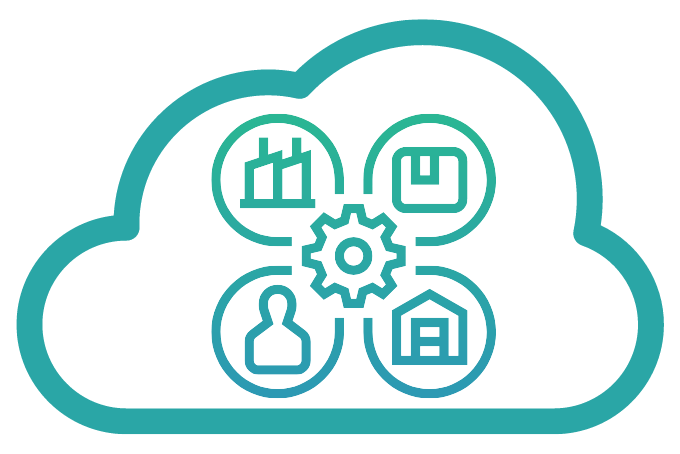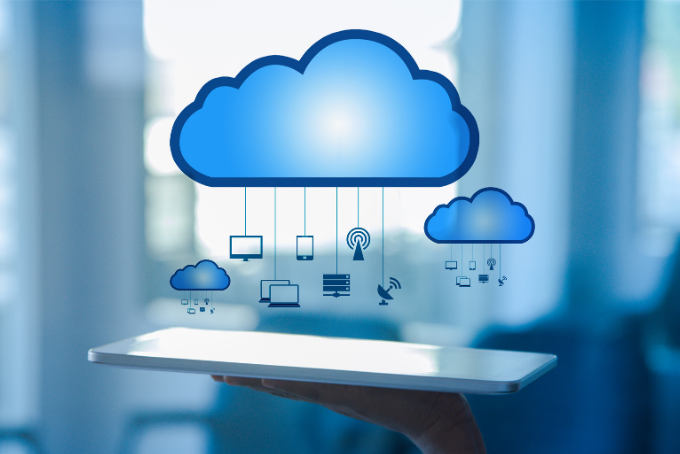
27 Jun Cloudify your Business
Cloudify your business
Take your business to the Cloud!
First, what is Cloud computing? Put simply, it is just a network of servers delivering computing services over the Internet using a network of remote servers. It involves the provision of on-demand access to a variety of resources and services, including servers, storage, databases, software applications, networking, and more.
Instead of relying on local infrastructure and physical hardware, cloud computing enables users to access and utilize these resources through the internet. The underlying infrastructure and management of these resources are handled by cloud service providers, allowing users to focus on their applications and data rather than the maintenance of physical servers.
For example, you run a landscape gardening business and you have 8 designers all using Computer Aided Design (CAD) software. Traditionally this would need to be installed on all the users devices, ‘8 instances’. With Cloud Computing the CAD software sits in the Cloud, you would pay one subscription fee for it and then your 8 users would log on using a browser or by downloading an App.
There are three types of cloud computing services:
• Software-as-a-Service or ‘SaaS’
Just like our example, SaaS is software you subscribe to and then access from a browser or App
• Platform-as-a-Service ‘PaaS’
PaaS products let you develop your own Apps without having to buy, install, or host any infrastructure. A bit like getting a bus, you get to go where you want without needing to drive.
• Infrastructure-as-a-Service ‘IaaS’
IaaS products allow you to subscribe basic computer infrastructure — such as servers, data storage, and virtual private networks — without buying any hardware
Traditional business computing almost always had physical Servers. These Servers were often expensive, required on-going maintenance to keep them running effectively and needed replacement every 4 -5 years. They also consumed power 24 x 7, often requiring air conditioning to keep them running too. Modern Cloud Computing changes this.
It is often easier for new businesses to start from the Cloud, however how would an established business with on-premise servers take advantage of Cloud Computing and what are the advantages and disadvantages?
Mobility is probably the biggest advantage offered by Cloud Computing as you can pretty much work from anywhere with an Internet connection.
What are the advantages of Cloud Computing?
Here are the four main advantages of Cloud computing:
• Potentially saves money as you no longer need maintain a server room
• Is safer and more reliable as the Cloud Providers livelihood relies on their quality of service
• Is more flexible as the subscription model can cope with demand changes
• Makes it easier to collaborate as users can work from anywhere
What are the disadvantages of Cloud Computing?
Going into the Cloud has some fantastic advantages however there are also disadvantages you might need to consider such as:
• The service might go offline at a moment’s notice. While many providers claim high reliability such as 99.99% this equates to nearly an hours downtime per year which might be critical to you.
• You are very dependant on your Internet Connection.
• Depending on the provider this may raise privacy concerns. You should be comfortable about what data is going into the Cloud.
• May give you less control. While this great for the non-technically minded, there may be limits as to what you might be able customise.
• You may be locked into a lengthy contract which if you’re locked into a small provider and outgrow them then you might have to wait to migrate elsewhere.
Cloud Computing is the future
Upgrading to the Cloud is most definitely the future and is here to stay. For new businesses it becomes an easy way to start out, allowing you to manage your costs easily. For established businesses you can boost productivity and be able to adapt quickly. Approaching Cloud with caution and preparation will allow you to balance the advantages with the disadvantages. One thing to remember though is that no one said that Cloud will be cheaper, it’s just different.
I think I’m ready for the Cloud!
Do you feel ready for the Cloud? We suggest you cover the following points to get you started:
Define your goals
Determine firstly why you want to move to the Cloud. Identify the specific benefits you hope to achieve, such as scalability, cost savings, increased agility, or better team collaboration.
Assess your IT infrastructure
Evaluate your current IT setup, including hardware, software, and networking. Identify the applications and data that can be moved to the Cloud and those that may require special considerations.
Choose a Cloud provider
Research different Cloud service providers (CSPs) to find the one that aligns with your business needs. Consider factors like pricing, reliability, security, scalability, and the range of services offered.

Plan your migration strategy
Develop a detailed plan for migrating your IT assets to the Cloud. Determine the order of migration, potential dependencies, and any necessary modifications to your applications or infrastructure.
Design your Cloud architecture
Create a Cloud architecture that suits your business requirements. Decide whether you will use Infrastructure as a Service (IaaS), Platform as a Service (PaaS), or Software as a Service (SaaS) offerings, or a combination of these.
Set up the Cloud environment
Provision the necessary Cloud resources, such as virtual machines, storage, and networking components, according to your design. Configure security measures, access controls, and backups.
Migrate your applications and data
Start migrating your applications and data to the Cloud environment. Depending on the complexity and size of your infrastructure, you may choose to migrate all at once or adopt a phased approach.
Test and optimize
Verify that your applications and data work correctly in the Cloud environment. Conduct thorough testing to ensure compatibility, performance, and security. Optimize your Cloud configuration as needed.
Train and educate your staff
Provide training to your internal IT team and end-users on how to effectively utilize the new Cloud-based services. Educate them on best practices for Cloud security, data management, and collaboration.
Monitor and manage your Cloud environment
Implement robust monitoring and management tools to track the performance, availability, and cost of your Cloud resources. Regularly review and optimize your Cloud setup based on usage patterns.
Ensure security and compliance
Apply appropriate security measures, such as encryption, access controls, and firewalls, to protect your data in the Cloud. Ensure compliance with relevant regulations, such as data privacy laws or industry-specific standards.
Continuously improve and iterate.
Embrace the Cloud’s agile nature and keep exploring new Cloud services or features that can enhance your business operations. Regularly review and refine your Cloud strategy based on your evolving business needs.
What next?
It’s worth noting that the Cloud migration process can be complex, and it’s often beneficial to work with experienced Cloud consultants to ensure a smooth transition. Here at Newman our IT Team have over 20 years industry experience of successfully moving our clients to the Cloud and maintaining their systems. We enable this move with the utmost efficiency, ensuring maximum uptime, system security and continuity by implementing industry-leading, future-proof systems and processes.
Newman specialise in migrating many different businesses to the Cloud. So, if you are interested in finding out more about how Newman can help your business get to the Cloud call our team on 01892 664155.


